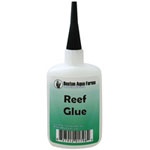Hello, Frank Indiviglio here. Among the Cichlids (Family Cichlidae) we find some of the most interesting and highly desirable of all freshwater aquarium fishes. Nearly all show a startling degree of responsiveness to their environment and owners, with many becoming true “pets” as opposed to animals to be observed only. Included among the group are Oscars, Jack Dempseys, angelfishes, convicts and other popularly-bred species, as well as a number about which little is known.
Diversity and Range
With well over 1,300 species named to date, and many as yet un-described, this family is one of the fish world’s largest. Ranging in size from 1 to 36 inches, Cichlids inhabit the fresh and brackish waters of Central and South America, the West Indies, Africa, Madagascar, Syria, Israel, Iran, southern India and Sri Lanka. One species, the Texas cichlid, occurs in the USA. Found throughout the drainage of the lower Rio Grande River, it is the most northerly of all cichlids.
A number have been widely introduced, with Oscars (velvet cichlids) being long-established in southern Florida. I have collected them in the Everglades, and have reports of a great many other introduced populations.
Parental Care
One near universal trait among the family is the amazing degree of parental care given the young. In many cases both the parents tend to the fry, cleaning them and the nest site and driving off potential predators. The lovely, popular discus (Symphysodon aequifasciata), a native of the Amazon Basin, feeds its young with a modified mucus secreted from the skin.
The Unique “Second Jaws”
Cichlids have a second pair of jaws in the throat. Known as the pharyngeal jaws, these unique structures process food and have freed the primary jaws to develop an amazing array of adaptations to deal with specific and unusual food items. Included in this family are species that feed upon bacteria, other fishes, hard-shelled mollusks, algae and an amazing assortment of other food items.
It is speculated that specialized adaptations have allowed cichlids to become the dominant fish family in many of the ecosystems in which they occur.
African Rift Lake Cichlids
In Lake Victoria and other water bodies of Africa’s Great Rift Valley live a variety of cichlids that have all evolved from a very small number of “parent species”. About 90% of these fishes are endemic to a single lake, and the speciation process seems to have occurred in the relatively short time. Up to 200 closely related species, often termed “species flocks”, may be found in a single lake.
I’ll cover the care of individual Cichlid species in the future. Until then, please write in with your questions and comments. Thanks, until next time, Frank Indiviglio.
Further Reading
We have posted a number of Cichlid care articles on our blog. For information on keeping the popular and aptly-named Red Terror, please see The Red Terror: Cichlid Species Profile .
Ed. Note: Lots of cichlids are featured on our catalog photo contest located on Facebook. Take a look here and vote for your favorite.
 That Fish Blog – Aquarium Advice and Information
That Fish Blog – Aquarium Advice and Information


